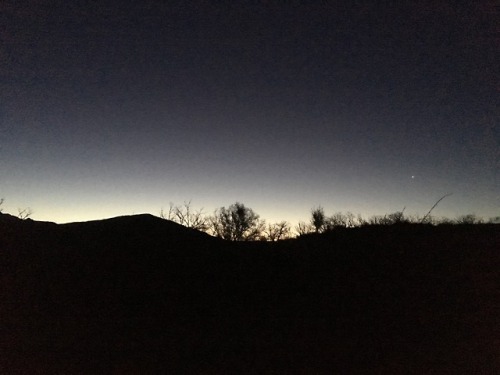
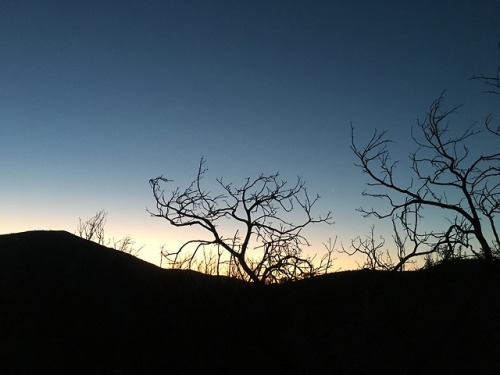
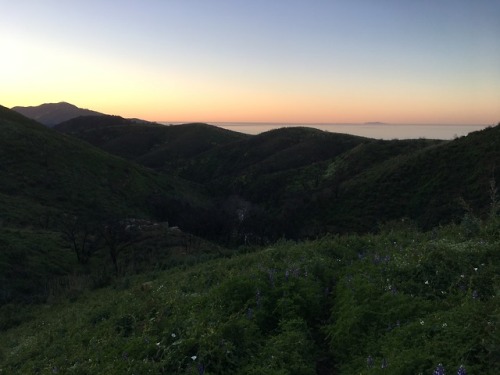
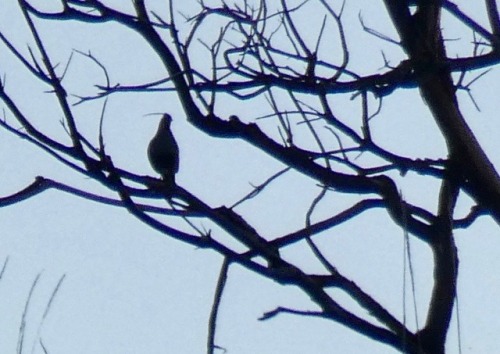
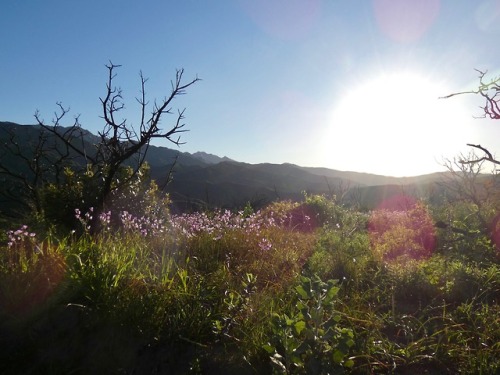
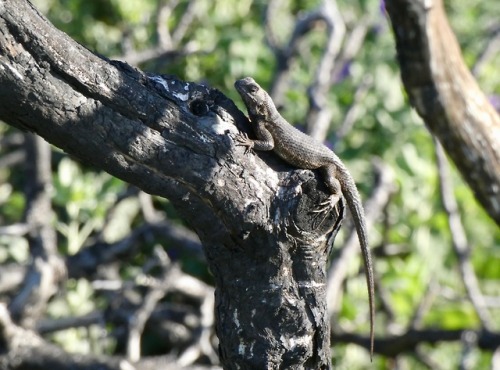
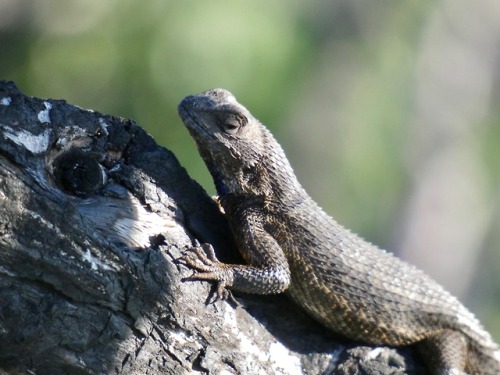
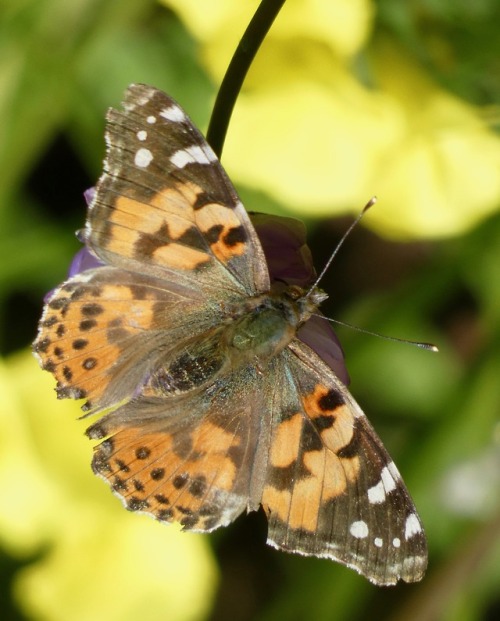
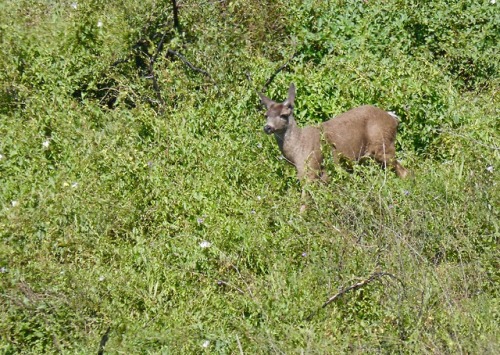
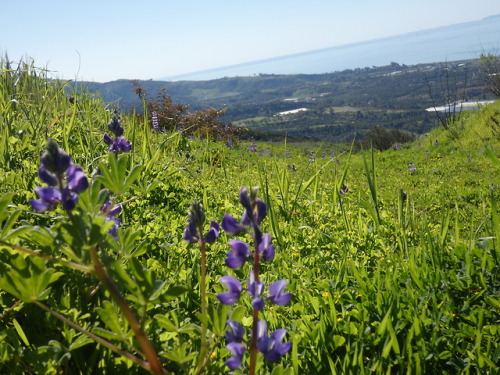
Sometimes when I’m birdwatching
Fifteen months ago the hills above Carpinteria burned. Last Sunday I hiked up the Franklin Trail before dawn; this is what it looked like.
Reposted from https://lies.tumblr.com/post/183578915826.










Sometimes when I’m birdwatching
Fifteen months ago the hills above Carpinteria burned. Last Sunday I hiked up the Franklin Trail before dawn; this is what it looked like.
Reposted from https://lies.tumblr.com/post/183578915826.
Nature is so beautiful… look at this beautiful display of the prickly rose gall. These galls are a parasitic sack formed by the cynipid wasp. The wasp, like many other parasitic insects, uses the wild rose plant as a safe haven for its offspring. They inject a substance into the plant and then lay their eggs in it, as the larva grows, so does the gall and that is what the larva uses as a food supply and as a protection sack until they are ready to join the world. You would think this type of parasitic infestation would be damaging to the host plants, but research shows that the plants are not affected by these types of infestations.
I find galls very interesting and these ones in particular are one of my favorite… the wasp that created these galls was surely an artist… it used the leaves to create the perfect bed for its children <3 here is another perfection of Nature’s artistry…
#galls #insects #parasitic #parasiticwasp #cynipidwasp #natureswonders #naturesbeauty #freespiritandmind #art #artistry #plantgeek #plantlove (at Love Nature)
Diplolepis polita is the wasp’s scientific name. These galls show up in the California wild rose (Rosa californica) at the Carpinteria salt marsh; I love showing them off to tour attendees. Russo discusses the species extensively in Field Guide to Plant Galls of California and Other Western States.
I’ve always wondered if the spines (which are flexible at first, then become brittle with age) represent the wasp repurposing the genetic code that produces the rose’s thorns.
Reposted from https://ift.tt/2czLwqs.
lies:
Insects associating with coyote brush (Baccharis pilularis) at the Carpinteria Salt Marsh, February 8, 2015.
Originally posted 2015-02-09.
Reposted from https://ift.tt/1qaOXp0.
lies:
Bugs at the marsh
Here are more photos I’ve taken recently at the Carpinteria salt marsh. These all relate to arthropods (to insects, mostly, plus one spider), so I’ve put them in a separate post to help anonsally avoid them with Tumblr Savior.
The outbreak of green leaf beetles (Trirhabda flavolimbata) that defoliated much of the marsh’s coyote brush (Baccharis pilularis) has now ended. There are only a few adult beetles left, and the coyote brush has started putting out new leaves. I took the photo above on July 14, when the beetles were still fairly easy to find.
The next image is of a syrphid fly in the genus Allograpta; probably A. obliqua or A. exotica. I took this photo the same day as the beetle photo and just a few feet away; both insects were sitting motionless at the tips of their respective stems, giving me time to take lots of shots until I got the focus right. Syrphids (also called hover flies or flower flies) act like bees, hovering to drink nectar from flowers and serving as important pollinators. They don’t have stingers, but have evolved warning colors like bees and wasps to confuse predators into leaving them alone. This is “Batesian mimicry,” named after 19th-century British naturalist Henry Walter Bates, who first observed it in South American butterflies. Whenever I hear the term, though, I think of Mrs. and Miss Bates from Emma.
Next are a couple of photos of super-cool twisted stem galls in coyote brush. The galls are the work of Rhopalomyia baccharis, a tiny midge. The adult midges look identical to their close relatives, Rhopalomyia californica, which I’ve blogged about before, but the galls are completely different. R. californica galls are the size and shape of a marble, and are found at the end of coyote brush stems. R. baccharis galls take the form of these thickened S-curves in the stem itself. A single larva lives in a chamber below each of the gall’s curves. Unlike R. californica larvae, which chew their way to the gall’s surface before they pupate, R. baccharis larvae pupate deep within the gall. Then, somehow, they trigger the host plant to create a tunnel leading to an elliptical exit hole through which the adult midge emerges. The lefthand image above shows me holding a gall to give a sense of scale, while the righthand image shows a different gall with one of those elliptical exit holes.
There is a patch of coyote brush near the marsh amphitheater that has a bunch of these galls right now, and I’m really excited about it, because although I’ve looked for them for years I’ve previously only found a few of them. Hopefully the city Parks and Rec. gardeners won’t prune these, as they previously did with another batch of twisted stem galls I found at the marsh.
The next image shows me holding another kind of coyote brush gall. This is the work of a moth called Gnorimoschema baccharisella. A single caterpillar lives inside the gall. When it’s ready to pupate the caterpillar chews its way out and falls to the ground. But that’s not the end for the gall. Now that it has that convenient hole, a bunch of other species invade it. Fungus grows on the departed caterpillar’s frass (droppings) inside the gall, fungus mites arrive to feed on the fungus, and probably lots of other things happen that I haven’t learned about yet. You can read more about G. baccharisella and see some video I took of a fungus mite running around inside an old gall at my Carp Without Cars blog.
The last image above is not of a gall, but of the kind of thing many observers mistakenly think galls are: an egg case. Specifically, an egg case of the bolas spider (Mastophora cornigera). Bolas spiders have an amazing hunting behavior: They catch their prey not by weaving a web, but by letting out a silken thread with a sticky blob on the end, then waving it around to lasso passing moths. To help improve their chances, the blob gives off a chemical scent that mimics the pheromones of the target moth species. Researchers have found that the bolas spider varies the chemical signature of the scent lure over the course of the night, to better match the pheromones of different moths species that tend to be active at different times.
I wrote more about the bolas spider in another post at Carp Without Cars, so check that out if you want. You can also watch a cool video from David Attenborough’s Life in the Undergrowth series, showing a bolas spider capturing its prey. It’s kind of creepy to watch, even for someone like me who has worked for decades to overcome his arachnophobia, but I think it’s interesting.
Originally posted 2014-08-09.
Reposted from https://ift.tt/1pQREwi.
lies:
Did you know that the bumps under a leaf especially red ones are wasp eggs? Other insects too. So, for every single one you see, KILL IT, unless you like wasps and their stings.
They’re not eggs. Well, they could be eggs, since I don’t know exactly what you’re describing. But insect eggs are tiny. What you’re probably talking about are galls.
Galls aren’t eggs. They’re swellings that a plant creates in response to a gall-inducing organism (often a wasp, though other types of insects and some non-insect species cause galls as well). The gall inducer’s larvae then live inside the gall, feeding on the plant tissue.
Galls are fascinating, and sometimes beautiful. Gall-inducing wasps tend to be tiny; a quarter-inch to a half-inch long. They can’t sting you. By destroying a gall you aren’t protecting yourself. You’re just killing another living thing for no reason.
Here are some galls that look like what you might be describing. These were on the underside of the leaves of an arroyo willow (Salix lasiolepis) at the salt marsh near where I live. I believe these were probably caused by a sawfly from the genus Pontania (not actually a wasp, but the adults look sort of wasplike):
My favorite gall inducers are a tiny midge called Rhopalomyia californica. They live almost their entire lives inside a gall they create in coyote brush (Baccharis pilularis), a common shrub that grows along the coast near here.
Adult R. californica midges leave their galls in coordinated emergence events. We don’t know how they time it so they all emerge at once, but it seems to be related to rainfall. What we do know is that about 24 to 48 hours after a rain, adult midges emerge from their galls around sunrise. The adult midges look kind of like small mosquitoes, though they can’t bite. They don’t have mouths. The females are already full of eggs; you can recognize them by their swollen orange abdomens.
Within an hour of emerging, their wings have hardened and they begin looking for a mate. After mating, the males die. The lifespan of an adult male is about two hours.
Females begin laying their eggs on the growing tips of nearby coyote brush stems. They lay as long as they can. The lifespan of an adult female is about eight hours.
It’s easy to find R. californica galls once you know what to look for. Here’s a picture I took of one. You can see the leftover exoskeletons (called exuviae) of the emerged adults:
Finding an adult midge is harder. I’ve never seen an emergence event in-progress, though I keep looking. The closest I’ve come is finding the body of a dead female a day or two after emergence:
She was still laying eggs when she died. The tip of her abdomen was stuck to the plant, an orange line of eggs trailing from it.
Bugs can be scary. A few of them can bite or sting, especially if you bother them. But most of them don’t want to hurt you. They’re just living their lives.
Originally posted 2014-06-18.
Reposted from https://ift.tt/1RtKPJI.